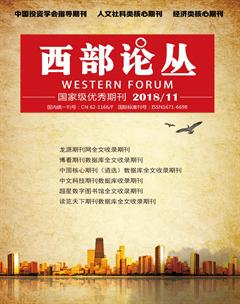Intellectual Property
Intellectual property, often referred to simply as IP, is a right conferred by legitimate government to the creator of that intellectual property through a patent which confirms sovereignty over the trademark and exclusive rights to the copyright holder, which may be time limited within a valid/stated period (Waelde and MacQueen, 2007). Intellectual property rights protect confidential information from tampering and mainly refer to patents, copyright, design rights and trademarks. All kinds of intellectual creations such as inventions, literary and artistic works, and symbols in the commercial use of names, images and designs, can be considered to be owned as intellectual property rights by an individual or organisation. Intellectual property is close to human social practice in the creation of proprietary intellectual rights. A patent is usually a document issued by a government agency, or a regional organisation representing a number of countries, on the basis of an application that records the content of the invention. For a given period of time, patents are subject to legal protection, that is, the patented invention in general cannot be utilised by others without the express permission of the patentee (Ernst, 2003). With the development of science and technology, to better protect the interests of property rights, the copyright system came into being and continues to improve. With global integration and the openness of modern society, the right to intellectual property becomes imperative. As May (2007) notes, with the growth of global commercial interests, there is increasing infringement of patents, copyright, trademarks and other forms of intellectual property. This paper considers the case of Apple Inc. versus Samsung Inc. to illustrate the importance of intellectual property and patent litigation, and furthermore, analyses the means by which companies' strategy protection impacts on the market.
In the current high-end smart mobile phone market, Apple and Samsung are undoubtedly the largest two mobile phone enterprises. With the rapid development of smart mobiles, competition between the two giants of the industry intensified. Recently, Apple and Samsung's patent war has become the focus of global investors and ordinary people alike. Litigation was prolonged for over 16 months, with legal representatives numbering over 100 people. The legal case was finally won by Apple, with Samsung ordered to pay compensation of $1 billion, 49 million in total. Perhaps the size of the award against Samsung surprised Apple beyond all expectations, as well as maybe quarter profit of $3 billion 640 million for the Samsung smart mobile phone sales is not high However, as Cusumano (2013) notes, the legal case drew the attention of many in the industry who were quick to learn the lessons of the final verdict.
Reviewing the above-mentioned patent wars leads to the obvious conclusion that, with rapid development of science and technology, intellectual property has become an extraordinary aspect of enterprise development and a powerful weapon for businesses in competitive markets.
From the above case analysis, both Samsung and Apple have disadvantages and advantages in terms of patents. Basic communications patents have always been Apple's downfall; for instance, Apple had no patents on LTE before 2012, therefore Samsung has the largest occupation of LTE patents in the world. By contrast, Apple has an extremely strong advantage in designing and operating system patents. It can be concluded, therefore, that intellectual property rights are an area which enterprises must safeguard and take extremely seriously, being vital to their ability to gain market share in highly competitive areas. Regardless of the scale of the enterprise, all companies should learn from Samsung and Apple's patent battle, and strive to promote the comprehensive development of enterprise patents, thereby establishing a comprehensive intellectual property strategy. Reasonable patent layout can improve the overall value of the enterprise. Patents used as weapons play a critical role in business competition by reducing or avoiding unnecessary legal disputes. They can also break a "passive" situation in the inevitable lawsuits which can lead to loss, thereby protecting themselves more effectively. Secondly, enterprises should occupy the market through formatting a legal monopoly technology using patent protection, gradually forming a hierarchy protection mechanism. In effect, obtaining a patent right for core technology and improving the related technology of peripheral patent applications, thereby forming a complete basic technology. A strong backing by legal patent for technological and innovative advances, together with coverage of the peripheral related technologies, will be of considerable benefit to enterprises in understanding their competitive rivals in their drive to increase competitive advantage and market share.
作者簡介:闫靖雯(1994-),女,汉族,籍贯:河南洛阳,单位:新乡医学院三全学院,研究方向:市场营销。

